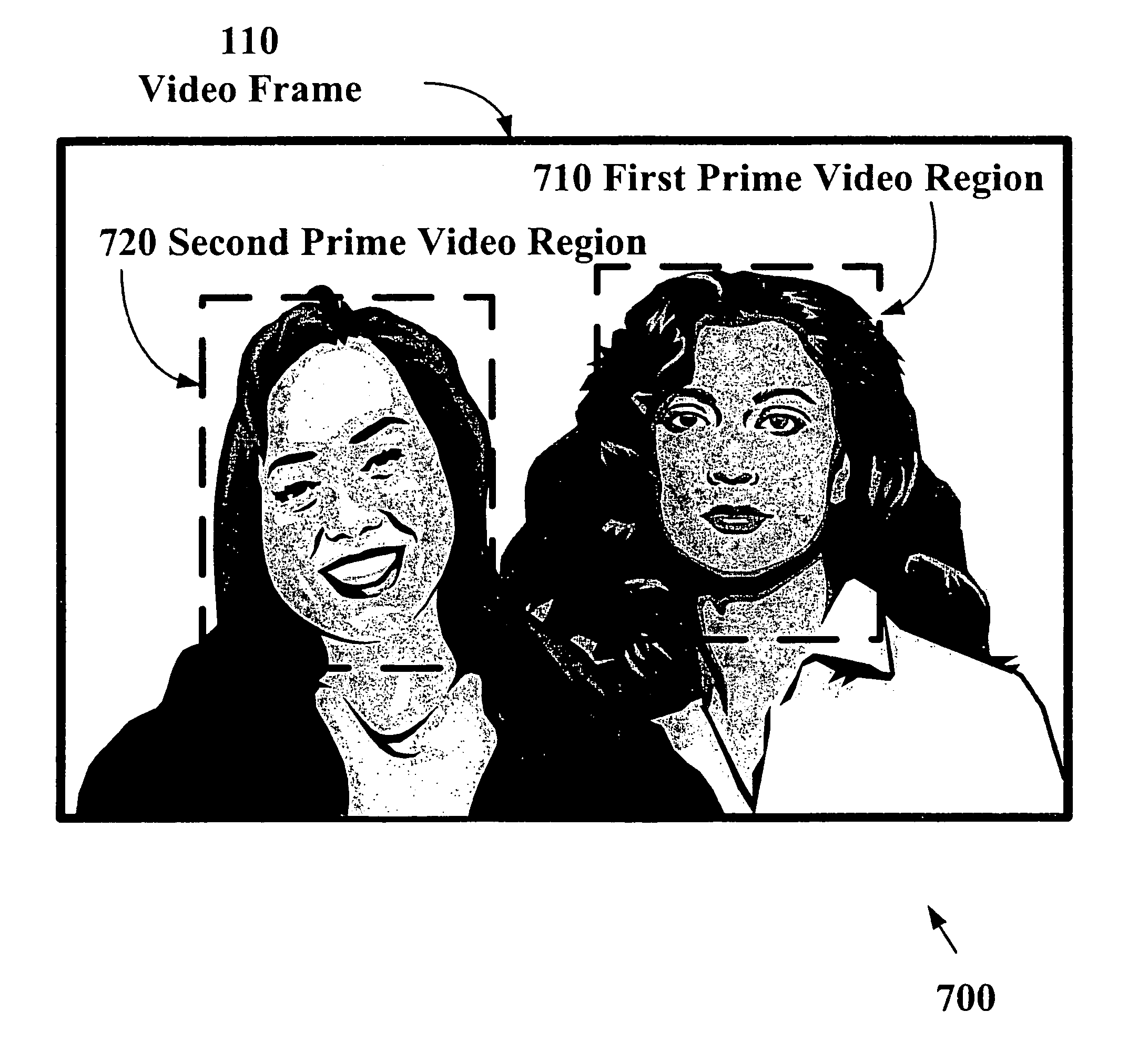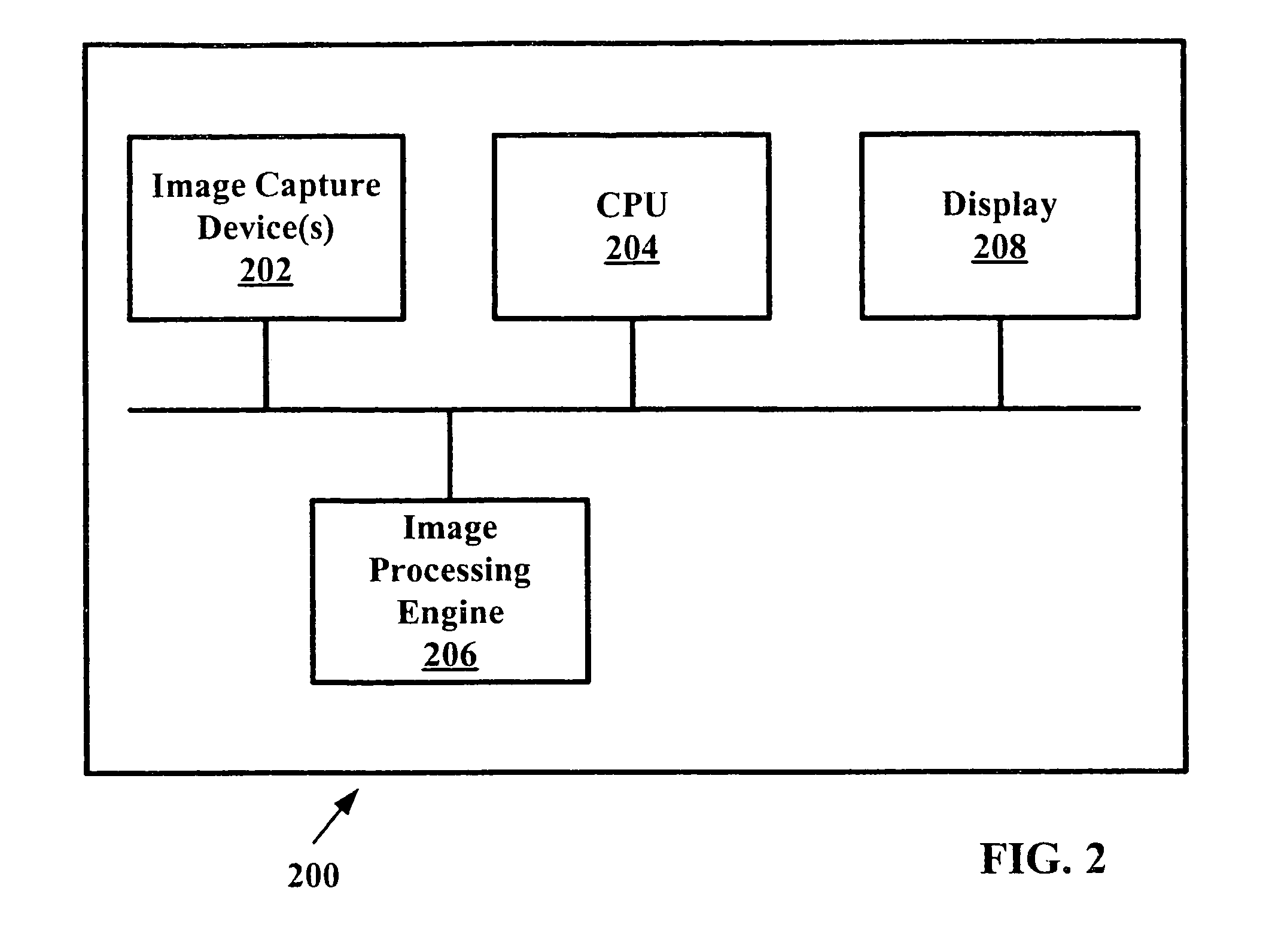System and method for dynamic perceptual coding of macroblocks in a video frame
a video frame and macroblock technology, applied in the field of video images, can solve the problems of reduced signal-to-noise ratio of individual video frames, jerky motion, non-lifelike pictures, etc., and achieve the effect of enhancing perceived video quality
- Summary
- Abstract
- Description
- Claims
- Application Information
AI Technical Summary
Benefits of technology
Problems solved by technology
Method used
Image
Examples
Embodiment Construction
[0027]FIG. 1 illustrates a typical prior art video window 100, which may be, for example, a window on a computer screen, other display device, or a full or reduced screen image on a television. A video frame 110 shows an extent of a typical transmitted video image used in a video apparatus.
[0028]The video frame 110 comprises a plurality of macroblocks such as macroblock 115. An enlarged area 120 of the macroblock 115 shows a 16×16 pixel macroblock 115, 130. Typically, each frame of a video image is partitioned into macroblocks. Conventionally, a CIF format includes 22×18 macroblocks or 396 total macroblocks for full CIF.
[0029]A central viewing area 105 is indicated within video frame 110. The central viewing area 105 is frequently an area upon which a viewer's attention is most strongly focused. In one embodiment, the central viewing area 105 indicates a positional reference related to common framing of a single human face. A common framing technique in video imaging is to have a si...
PUM
 Login to View More
Login to View More Abstract
Description
Claims
Application Information
 Login to View More
Login to View More - R&D
- Intellectual Property
- Life Sciences
- Materials
- Tech Scout
- Unparalleled Data Quality
- Higher Quality Content
- 60% Fewer Hallucinations
Browse by: Latest US Patents, China's latest patents, Technical Efficacy Thesaurus, Application Domain, Technology Topic, Popular Technical Reports.
© 2025 PatSnap. All rights reserved.Legal|Privacy policy|Modern Slavery Act Transparency Statement|Sitemap|About US| Contact US: help@patsnap.com



